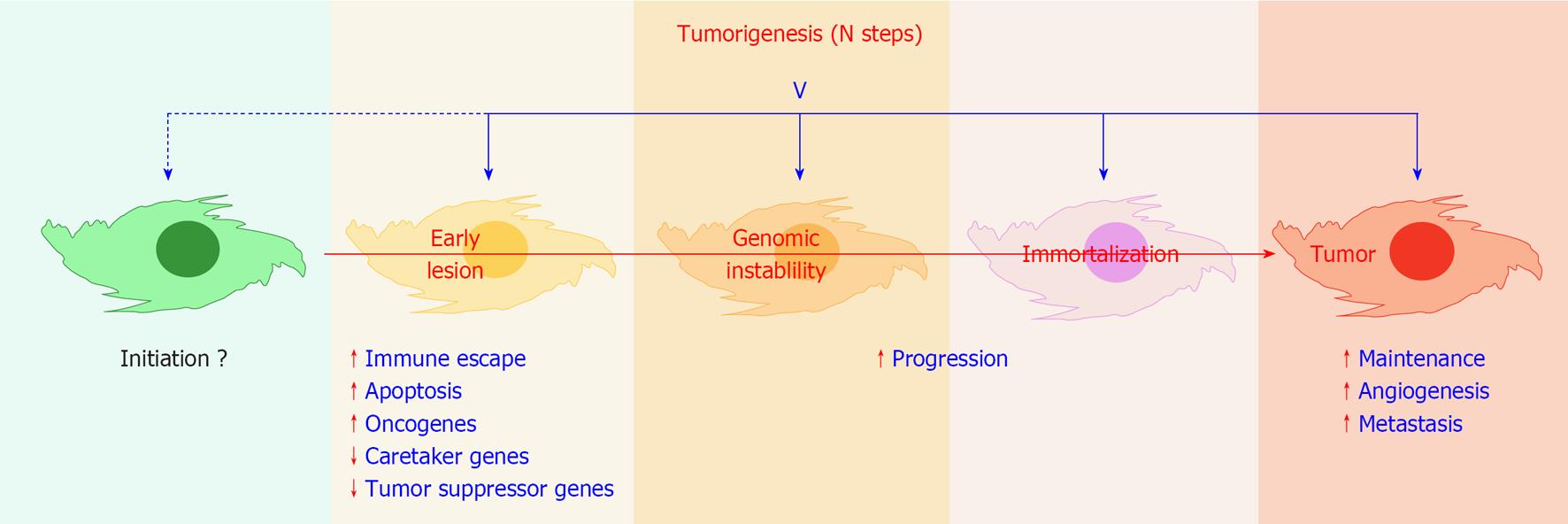Copyright
©2013 Baishideng.
World J Virol. May 12, 2013; 2(2): 102-109
Published online May 12, 2013. doi: 10.5501/wjv.v2.i2.102
Published online May 12, 2013. doi: 10.5501/wjv.v2.i2.102
Figure 1 Viral infection and tumorigenesis.
Viruses have been shown to encode functions that can modulate all crucial steps towards tumor development, with the exception of the initiation step(s). Recognized contributions of viral infection are mentioned in blue letters. V: Virus. Red arrowheads up, stimulation; down, inhibition.
Figure 2 Tumor initiation events mediated by virus induced genetic damage.
Virus entry into permissive genetically intact cells (green cells), can result in lytic replication or latency. In the latter setting the oncogenic potential of latent genes appears ineffective in vivo. Before silencing of most virus specific transcription is achieved, various viral functions are expressed which could induce genetic/epigenetic damage in a fraction of the infected population (red arrows, genetic damage 1). Cells surviving to sustainable damage (orange cells) could experience reactivation of the virus, host the virus genome in a latent state, or lose it after uneven segregation of their genetic material. In damaged cells latent gene products could now represent an effective oncogenic threat if cellular caretaker genes have been affected (red arrow, genetic damage 1, 2, 3…). Reinfection or reactivation of latent virus in damaged cells could result in further genetic offense, eventually leading to genetic instability, immortalization and tumor development. V: Virus; Lat: Latent; Lyt: Lytic. Blue arrows: Infection; Grey arrows: Consequences of infections; Black arrows: Death.
- Citation: Avanzi S, Alvisi G, Ripalti A. How virus persistence can initiate the tumorigenesis process. World J Virol 2013; 2(2): 102-109
- URL: https://www.wjgnet.com/2220-3249/full/v2/i2/102.htm
- DOI: https://dx.doi.org/10.5501/wjv.v2.i2.102










